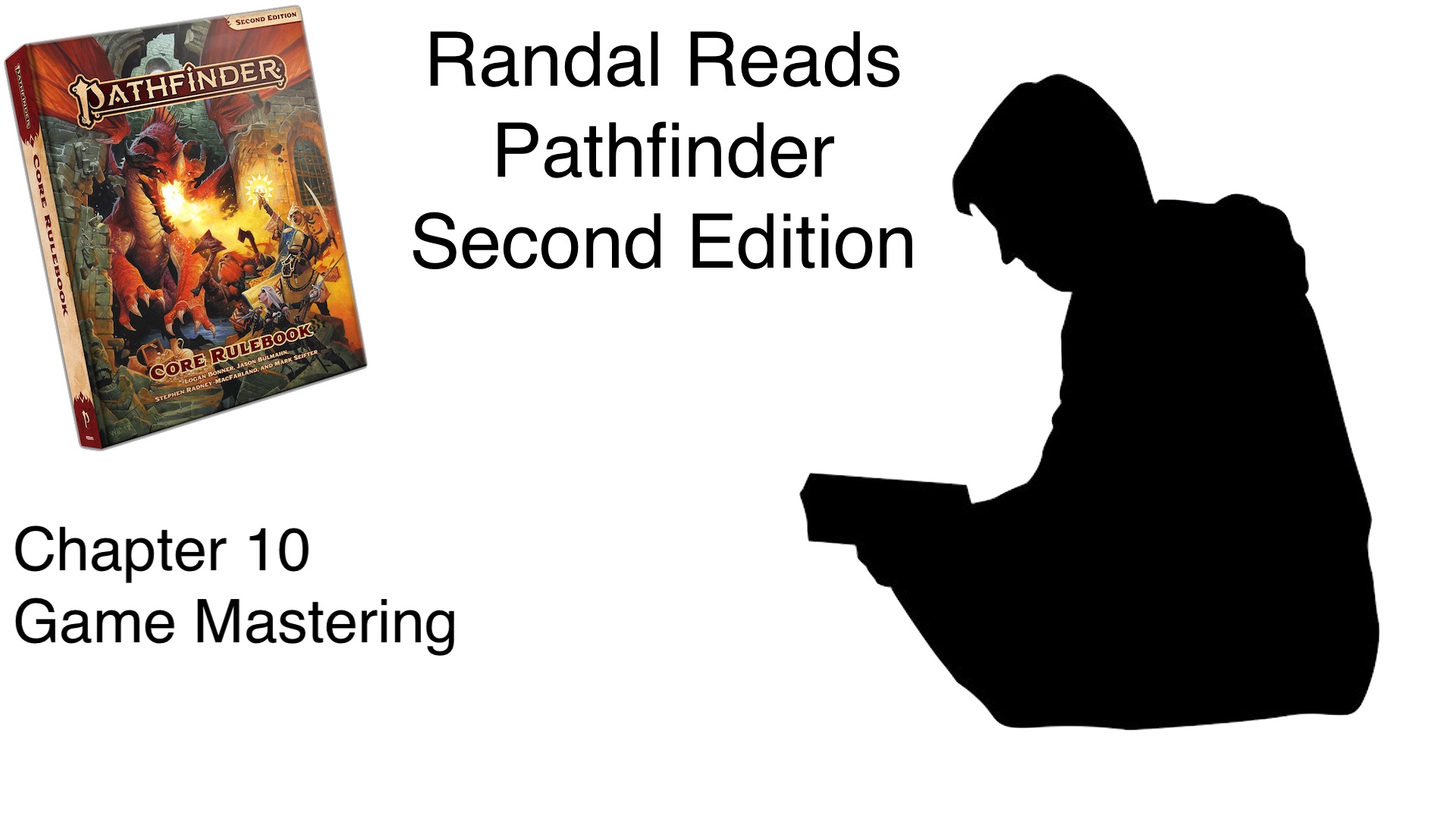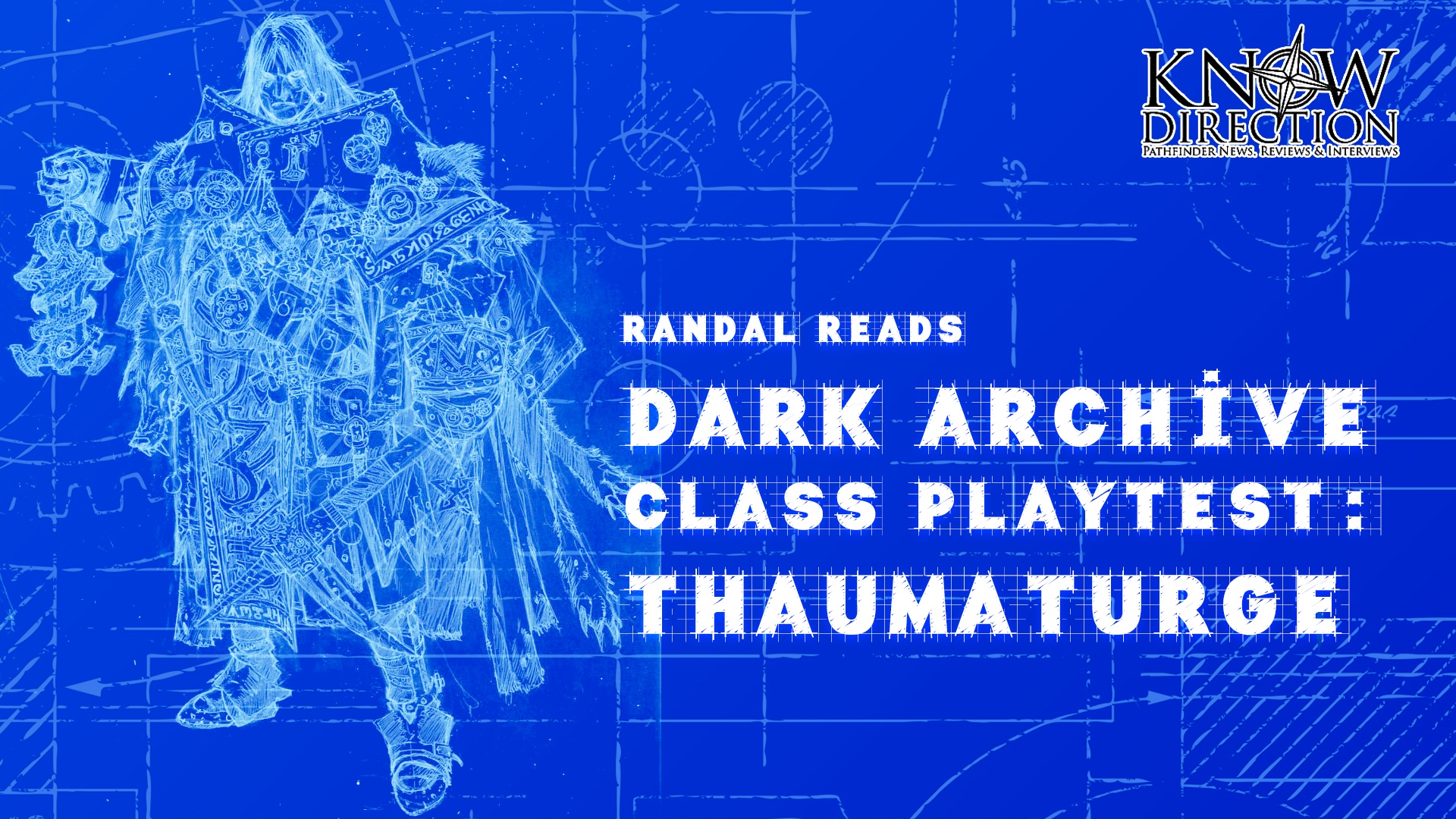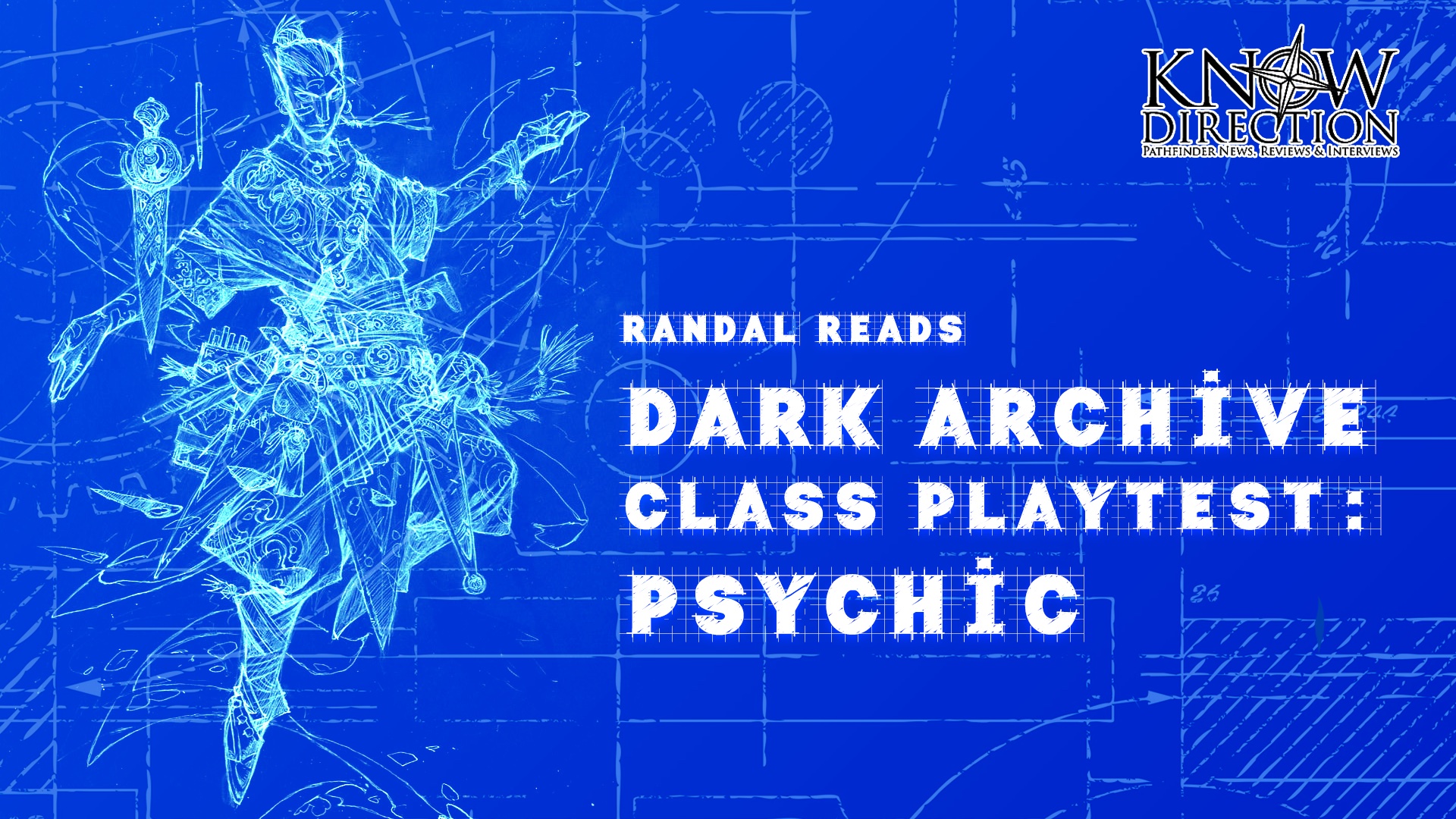Hello, and welcome to a special review of Pathfinder Second Edition. With most of the Know Direction team at Gen Con 2019, gluttonously consuming second edition in all its glory, most of our blogs are on hiatus. I, Randal, writer of Groundbreaking and Terraforming, am here to fill that void with a chapter by chapter review of the new core rulebook. This review is intended to simply be my take on the material as I read it, as first thoughts and impressions, and not a hard comparison of changes from first edition.
Chapter 10 – Game Mastering
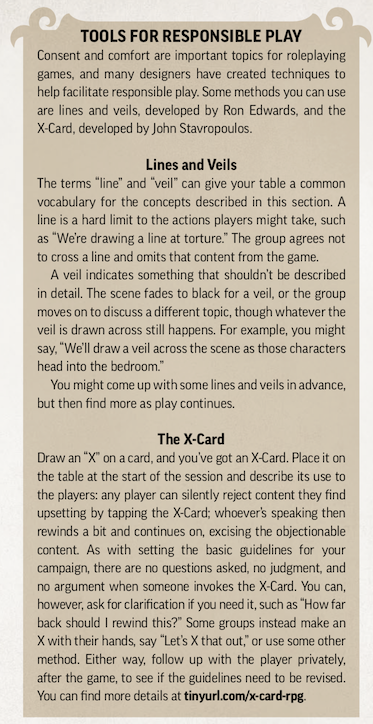 There is a lot of information packed in this section on preparing, and running campaigns, scenarios, and sessions … published or home brewed. A lot of it is old hat for experience GMs, especially those like me that used to (or still do) run their own world and their own adventures. A lot of sidebars and tables in here are going to be very useful to a lot of players (likely why they highlighted them!!!). From “Characters with Disabilities” to “Using Rarity and Access” to “Off-session Gaming” and “Sharing Responsibility” … they cover a ton. For some reason, the XP budget of an encounter confused me the first time through. I think I needed to get some sleep and reread it, because I have a handle on it now. Perhaps the samples I looked at didn’t use the full XP. Dunno, shrug, otherwise, I thought it was a simple read that made sense. Please let me know if I am alone or anybody else got tripped up! Also, I chuckled at the “Buy More of Our Stuff” sidebar at the end (it was really an informative block on their published works for players that are new to the game). The big call out here (partially because it is getting a lot of positive feedback in the circles I travel online) is the Tools for Responsible Play sidebar.
There is a lot of information packed in this section on preparing, and running campaigns, scenarios, and sessions … published or home brewed. A lot of it is old hat for experience GMs, especially those like me that used to (or still do) run their own world and their own adventures. A lot of sidebars and tables in here are going to be very useful to a lot of players (likely why they highlighted them!!!). From “Characters with Disabilities” to “Using Rarity and Access” to “Off-session Gaming” and “Sharing Responsibility” … they cover a ton. For some reason, the XP budget of an encounter confused me the first time through. I think I needed to get some sleep and reread it, because I have a handle on it now. Perhaps the samples I looked at didn’t use the full XP. Dunno, shrug, otherwise, I thought it was a simple read that made sense. Please let me know if I am alone or anybody else got tripped up! Also, I chuckled at the “Buy More of Our Stuff” sidebar at the end (it was really an informative block on their published works for players that are new to the game). The big call out here (partially because it is getting a lot of positive feedback in the circles I travel online) is the Tools for Responsible Play sidebar.
Running Modes of Play
As expected, this section is split into three (Encounters, Exploration, Downtime). I felt like it was written well for newer GMs, but still had some information that I was glad I read. Playing without a Grid sidebar was great, I often use “theater of the mind” when I feel the grid will be too restrictive. Inclusion of Social Encounters was nice to see, as was enemies fleeing. I liked seeing a rehash of the Exploration activities, such as Follow the Expert and Search, and Setting a Party Order is a good primer for newer groups and a decent reminder for others. I think my favorite read in here (was the list of things that occur after resting 8 hours, and the table on Watches and Rests. Seeing the total hours broken out by number of PCs resting is super handy. I get sick of calculating it every time it comes up (and often arguing about overlap), even though I/we should have memorized it by now.
Difficulty Classes
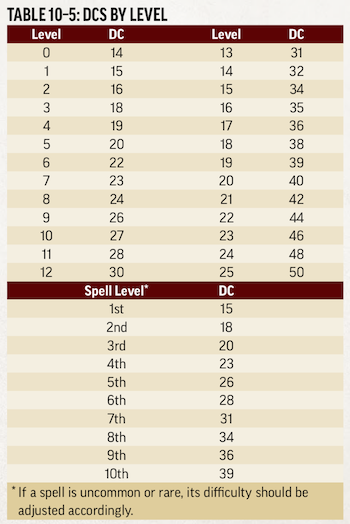 This is the one. I need to get started on memorizing these 4 pages immediately. It breaks out DCs into two categories to try and speed up adjudicating things at the table. Simple DCs. Learn it. Love it. Untrained 10, Trained 15, Expert 20, Master 30, Legendary 40. Level-based DCs … not so easy to learn and memorize, but great for fine tuning effects that come from creatures, hazards, spells, and other level based sources. Adjusting these DCs is pretty straight forward, +/-2 for minor change, +/-5 for moderate, and +/-10 for severe difficulty/ease (rarity also increases difficulty using these numbers: Uncommon +2, Rare +5, Unique +10). There is a great primer on “Determining the Scope of Lore” that I think a lot of players and newer GMs will find very useful, and the table on which skills are used to identify which creature traits (using Knowledge Recall) is one that I hope is on the GM screen I recently purchased.
This is the one. I need to get started on memorizing these 4 pages immediately. It breaks out DCs into two categories to try and speed up adjudicating things at the table. Simple DCs. Learn it. Love it. Untrained 10, Trained 15, Expert 20, Master 30, Legendary 40. Level-based DCs … not so easy to learn and memorize, but great for fine tuning effects that come from creatures, hazards, spells, and other level based sources. Adjusting these DCs is pretty straight forward, +/-2 for minor change, +/-5 for moderate, and +/-10 for severe difficulty/ease (rarity also increases difficulty using these numbers: Uncommon +2, Rare +5, Unique +10). There is a great primer on “Determining the Scope of Lore” that I think a lot of players and newer GMs will find very useful, and the table on which skills are used to identify which creature traits (using Knowledge Recall) is one that I hope is on the GM screen I recently purchased.
Rewards
Hero Points, Experience Points, Treasure, oh my! I like the way in which Hero Points have changed since 1st Ed. We tried it when introduced, but ultimately just ended up using the “no Hero Points, take extra feat” option. We are going to use it more this way. I feel like I already need to read this section again. Not because it was confusing or anything, I understand the concept of XP relative to party level … many games do (or have done) that. It is just that I usually run a game for 3 players that I add a GMPC to so that we have 4 PCs, but I am now running online games for a table of 6, and so I need to make sure I fully understand the ramifications of XP and Treasure increases for the new table size, as I am increasing encounter sizes to account for 2 extra PCs. Luckily it will be easy to find what I need by scanning, and then a quick reread will set me straight. Also, in my home games, I like to keep an eye on party wealth to ensure they don’t lag behind (often my players do silly and random things that is nowhere near as efficient as it is cool), so the tables we are used to (treasure by level and character wealth) are going to be referenced often.
Environment
 I will be rereading this section at least twice. There is so much good information packed into this area. It covers the environments as follows: Aquatic, Arctic, Desert, Forest, Mountain, Plains, Swamp, Urban, and Underground. Each is broken into subsections to describe the various difficulties characters are likely to encounter, such as: currents in aquatic, ice in arctic, canopies in forest, chasms in mountain, or crowds in urban. A number of sections are repeated, such as undergrowth, to explain how they function in that environment. Climate was split into Fog, Precipitation, Temperature, and Wind, and I felt the rules for them made sense and were simple; I liked the inclusion of fatigue under precipitation. Natural Disasters covers all the things you would expect to see (avalanches, earthquakes, floods, tornadoes, volcanoes, etc) but also breaks them down into the various different aspects of them that can hinder characters and cause damage. I should point out, that everything all damage references a single table of environmental damage that uses a category (for severity) to let the GM know roughly how much damage it should do. This will make it nice and easy to sort out a large assortment of environmental dangers with little fuss. Other tables and sidebars include a list of all environmental features mentioned (with page number and which proficiency DCs you can expect), terrain rules (difficult, greater difficult, hazardous), “doors, gates, and walls” (info on climbing, breaking, and opening them), and temperature effects (temperature ranges and the fatigue and damage associated).
I will be rereading this section at least twice. There is so much good information packed into this area. It covers the environments as follows: Aquatic, Arctic, Desert, Forest, Mountain, Plains, Swamp, Urban, and Underground. Each is broken into subsections to describe the various difficulties characters are likely to encounter, such as: currents in aquatic, ice in arctic, canopies in forest, chasms in mountain, or crowds in urban. A number of sections are repeated, such as undergrowth, to explain how they function in that environment. Climate was split into Fog, Precipitation, Temperature, and Wind, and I felt the rules for them made sense and were simple; I liked the inclusion of fatigue under precipitation. Natural Disasters covers all the things you would expect to see (avalanches, earthquakes, floods, tornadoes, volcanoes, etc) but also breaks them down into the various different aspects of them that can hinder characters and cause damage. I should point out, that everything all damage references a single table of environmental damage that uses a category (for severity) to let the GM know roughly how much damage it should do. This will make it nice and easy to sort out a large assortment of environmental dangers with little fuss. Other tables and sidebars include a list of all environmental features mentioned (with page number and which proficiency DCs you can expect), terrain rules (difficult, greater difficult, hazardous), “doors, gates, and walls” (info on climbing, breaking, and opening them), and temperature effects (temperature ranges and the fatigue and damage associated).
Hazards
10 pages of hazards. Okay, 2 pages about detecting, triggering, and disabling them followed by 8 pages of hazards. The explanation was easy enough to follow, and the XP table is handy as always. The stat blocks for hazards is great. Easy to read, and follows a similar layout to all other stat blocks, making them simple to learn. Stats for the actual attacks are written as every other melee or ranged block, and using reactions to explain what causes the traps to “spring” and “attack” is another simplicity of the new system I endorse. Looking down the list of all Hazards written up (of which there are 29 in total) I like that they included the must haves (Hidden Pit, Poisoned Lock, Slamming Door, Spear Launcher, Electric Latch Rune, Scythe Blades, and Fireball Rune) but there are some really cool ones that I am looking forward to toying with. One that caught my eye:
- The Bottomless Pit: The pit contains many handholds, so the falling creature can try to Grab an Edge again every 6 seconds. If the creature succeeds, it can start to Climb out from that point (though it might be a very long climb, depending on how far the creature fell). Since the creature falls endlessly, it can rest and even prepare spells while falling, though items dropped while falling are usually lost forever.
Tune in tomorrow for Chapter 11 – Crafting and Treasure

